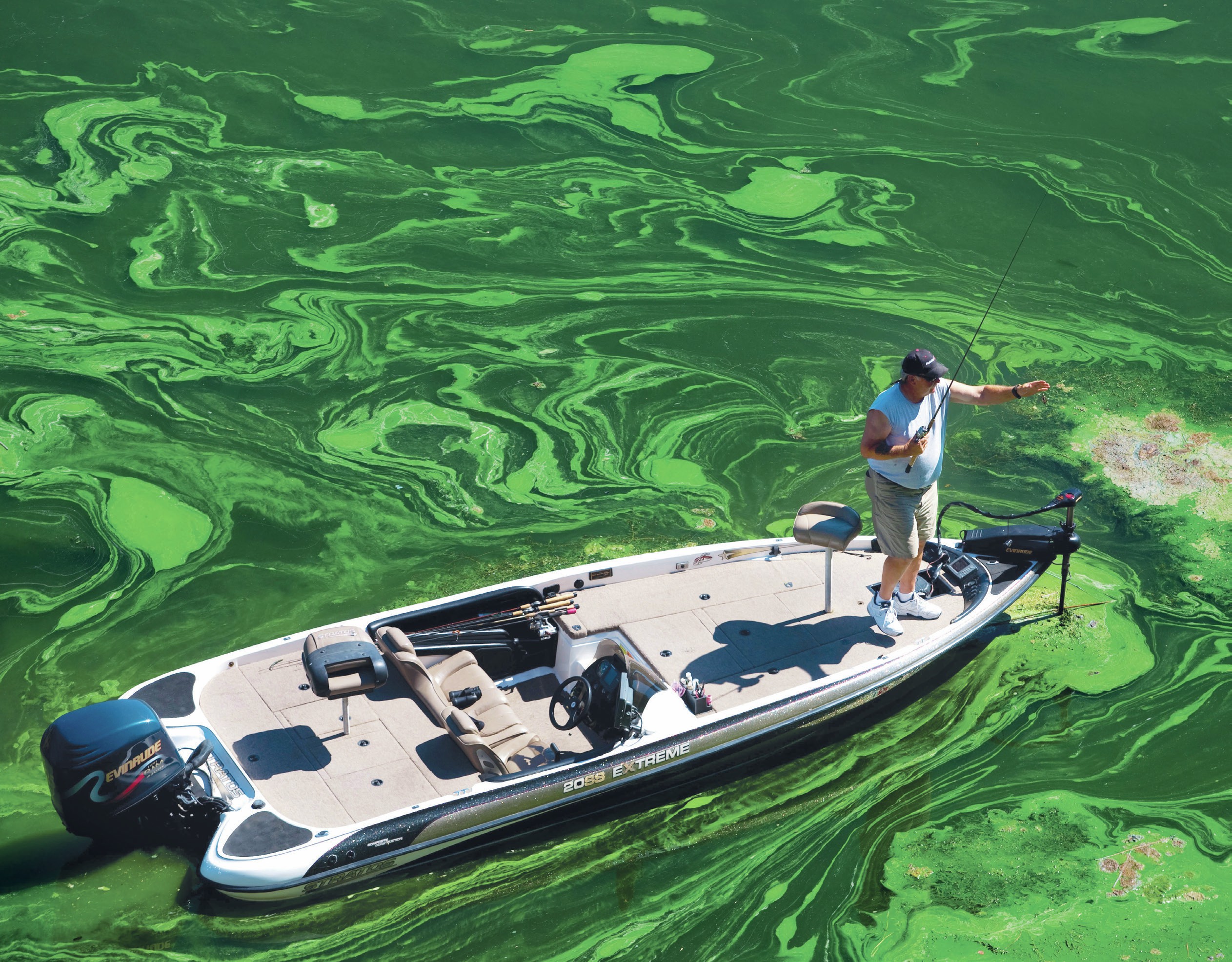
Farmers feed the world’s growing population. Those that are not using organic methods rely on hi-tech inputs such as synthetic fertilisers, inorganic pesticides and herbicides, and genetically modified seeds to improve productivity. This can come at an environmental price. Consider phosphorous and nitrogen, two naturally occurring elements. By manufacturing reactive forms of both, agro-foods corporations allow farmers to ‘super charge’ their land and boost crop growth. However, not all the phosphorous and nitrogen remain ‘locked’ inside the crops. Rain water can wash both elements out of the soil before plant uptake, or out of livestock waste that is not contained.
This excess phosphorous and nitrogen goes into nearby streams, lakes and coastal waters. Here it can cause blooming of algae — water-based plants that grow via photosynthesis. As this image of Copco Reservoir in northern California reminds us, fresh water is not only vital for drinking but offers a range of other benefits, such as places to fish and swim. Algal blooms are problematic. For instance, if the fisherman in this image were to swim in the water for more than a short period he would probably suffer eye irritation, allergic skin rash, mouth ulcers, vomiting and diarrhoea. The algal cover also reduces the beauty of water bodies like this. Inorganic fertilisers are not the only cause of blooms, but they are a key one.
Your organisation does not have access to this article.
Sign up today to give your students the edge they need to achieve their best grades with subject expertise
Subscribe




